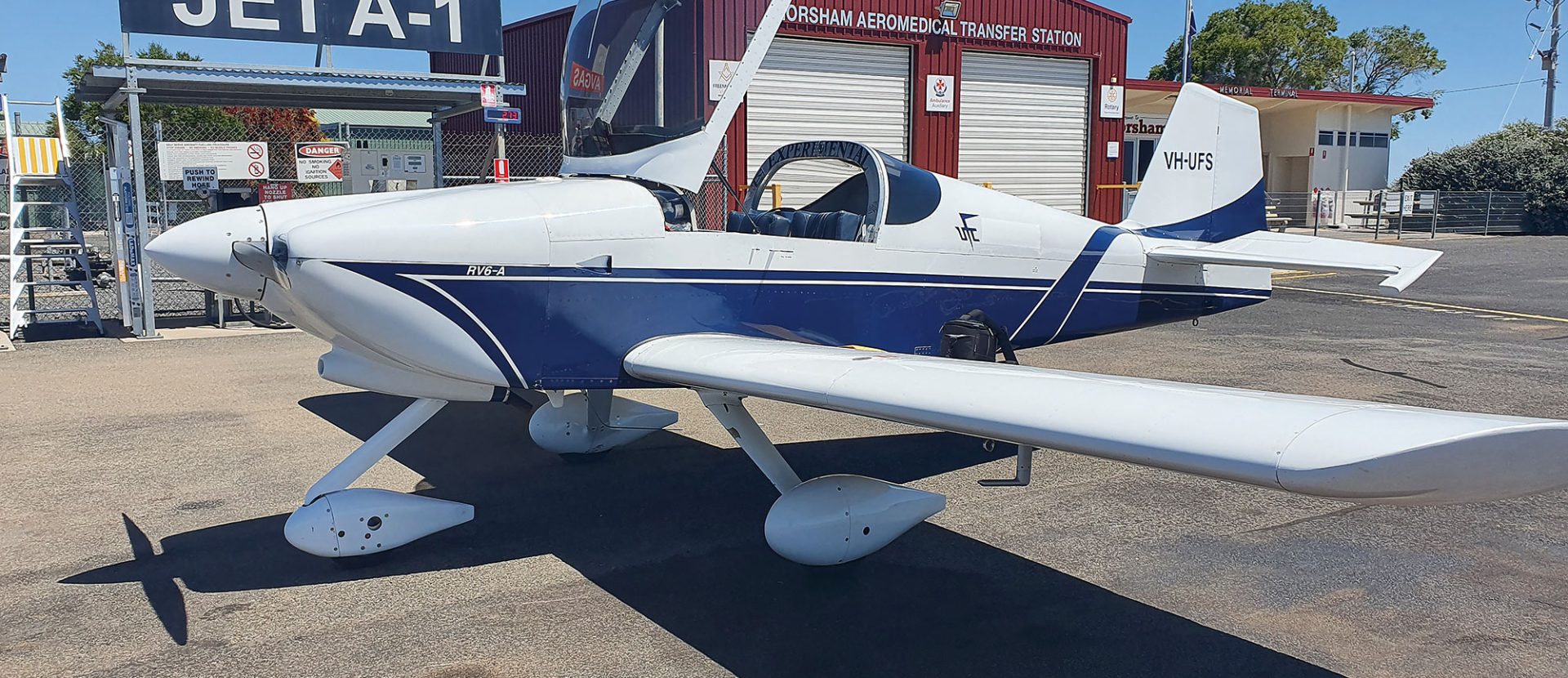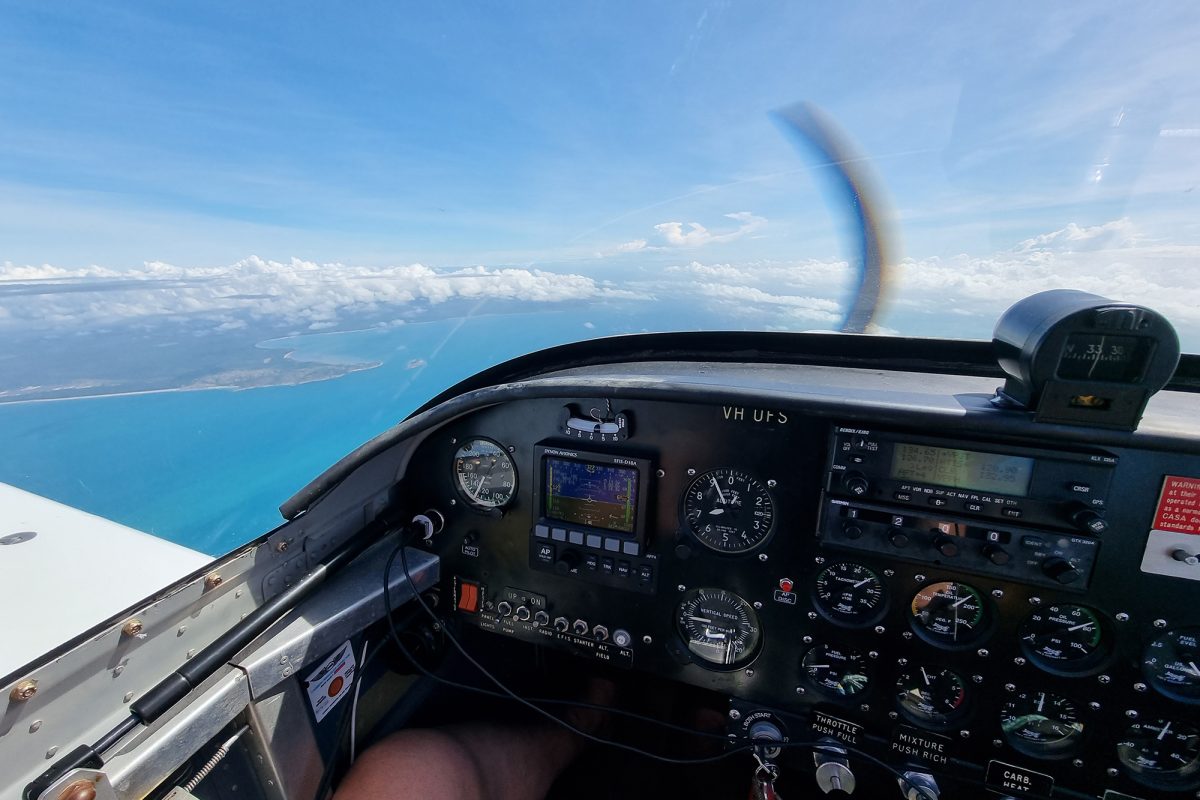FOLLOW NICK’S UPGRADE AND HOW IT IS TO FLY WITH AUTOPILOT
I find myself covering a lot of ground these days when flying – that is, when I’m not limited by COVID-19. A typical journey now is more than 500 miles. That’s a lot of time aloft in your typical aircraft with around a hundred knots over ground.
After years of flying mostly Tecnams, I made the decision to buy my own aircraft – preferably something a bit faster for those long legs. After a lengthy search, I settled on an RV6 because when they change the weight laws, I can register it as RA. It is fast (I plan for 147 kts) and it is light on the gas – about 28 litres an hour cruising. That’s actually giving me slightly better miles per gallon than the Tecnam.
One of the first trips I did in the new aircraft was Geelong (Lethbridge) to Brisbane and back via Canberra, with quite a few stops along the way. We had the luxury of two pilots on board, so we could share the flying. We tried to keep legs under 3 hours, but when you slide back in to the plane for that second leg of the day, it can be a little wearying. The year before I had flown a Tecnam single-handed from Geelong to Broken Hill and back facing stiff headwinds all the way. That made for a long, slow journey. There has to be a better way. And there is – Autopilot. But the Tecnam didn’t have it and neither did my brand-new, second-hand RV6. From the moment I bought it, we intended to add a few upgrades and autopilot was top of that list.
The RV6 had a pretty good mixed panel. Lots of gauges for the steam enthusiast, but also a Dynon D10a there to give you EFIS in one panel for the pilot in command. On the Brisbane trip we had discovered a few things. The compass in the Dynon had a tendency to wander. The elevation wasn’t corresponding with the true height by a couple of hundred feet at altitude and the fuel gauges were indicative at best. I had always flown with some sort of a fuel flow meter in the Tecnam, and I was surprised at how much I missed it. So, it was decided. At the next annual we would add an autopilot, add a fuel flow meter and sort out the wandering compass and altimeter.
The next question was what sort of autopilot and servos. An autopilot consists of 2 major elements. The first is the brains of the outfit, that manage the direction and altitude of the aircraft. The Dynon D10a I had onboard already provided that and had the capability to be hooked up to the second part of the equation – the control servos. These servos act on the elevator and ailerons to control the height and direction of the aircraft. That seemed simple enough. I checked against the cost of other options and availability. The fact that Dynon make a pre-built kit for the RV6 kind of shut the door on them. So, a kit was ordered by Horsham Aviation to suit, along with a small autopilot panel. You can work the autopilot straight out of the D10a but it’s kind of clunky. The AP74 module gives you some dedicated buttons and a value knob to twiddle to avoid having to delve in to menus in flight.


At the same time, I asked Horsham Aviation for some suggestions on a fuel flow instrument and they said the JP Instruments FS450 would suit. It was something they had fitted to a lot of aircraft and it was reliable. That was exactly the unit I was accustomed to from the Tecnam, so I readily agreed. It also came with a purpose designed harness for my engine.
Fitting all that on the panel wasn’t too hard. Especially as Horsham Aviation did all the work. We shifted the skid indicator and snuck the autopilot control panel right under the D10A. By displaying the voltage on the D10a, we effectively negated the need for a separate ammeter, which freed up a hole to drop the FS450 fuel flow meter in to.
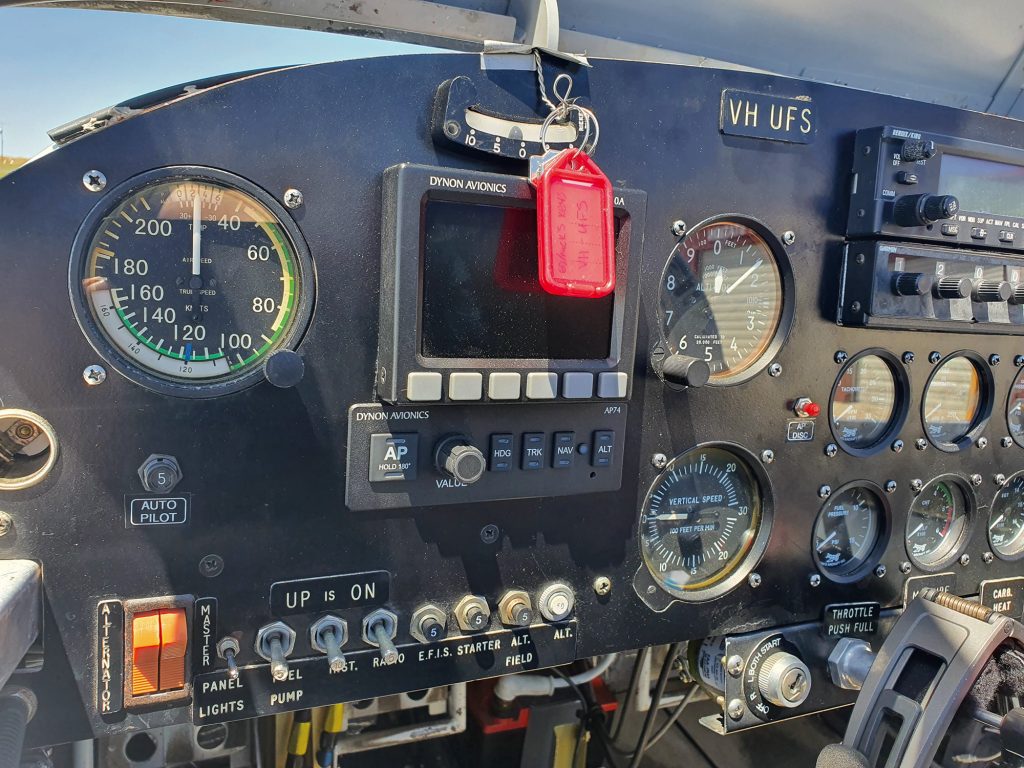
Fitting the autopilot servos was straight forward, but did require the removal and re-attachment of some pieces for access. The aileron servo sits right behind the seats and the elevator servo sits further back in the empennage. Fortunately, this was Horsham Aviation’s problem, not mine. During the install we discovered the issue with the D10a’s wandering compass was a faulty remote compass unit, which was replaced. The altitude issue was just a question of some fine tuning.
As you could imagine, I was pretty keen to get in to the air and try it. The hop back from Horsham to home base at Lethbridge, outside of Geelong – a little under an hour, would be the ideal opportunity.
Being the first flight after a service, we did an extra thorough pre-flight and warm up. The sky had just a few clouds as we lined up on Horsham 180. If you happen to be in the neighbourhood, Horsham is actually a very useful airstrip with 2 sealed strips and fuel by card 24/7. My kind of airport. When running back and forth to Mildura in a Cessna 206 for work, we would normally use Horsham as fuel stop when we needed a top up. That was back in the days when fuel by card 24/7 was a rarity and Horsham had one of the first setups. So, I was pretty familiar with the area.
As always, the RV6 surprised me with its eagerness to climb and accelerate and we passed 100 knots climbing out before the end of the strip. I wasn’t trying anything clever on my first try, so we climbed as usual to 3500 and set course for Geelong. With everything in the green, I leaned forward and pushed the AP button. The light came on to tell us it was working and…. nothing happened. In a good way. The aircraft just sat there like a Lycoming powered rock. Altitude steady. Direction steady. Working as advertised. So far, so good. We took the opportunity to lean out and measure our fuel flow with the new FS450 – 28 litres an hour on the knocker. That new fuel flow meter will pay for itself in about 150 hours. We were cruising at 146 knots TAS, giving us 154 over ground with a bit of tail wind assistance. Then we just sat back and enjoyed the serenity for a few minutes. But we couldn’t help ourselves. So, we used the height button to lift our altitude to 5500 feet. The Dynon D10a will actually tell you if it wants more power fed in, but I had pre-empted that with a couple of hundred extra revs. At 500 feet we levelled off, accelerated, dropped the revs back and continued, with a bonus 4 knots overground and a slightly smoother ride for our trouble.
At just under 160 knots over ground, Horsham to Geelong is a quick trip, so no sooner had we done that, the landmarks for home started to come in to view and we had to think about descending. After 10 minutes, we commenced our descent. The little RV6 loves to accelerate going downhill and we had to bring the throttle back a long way to stay in the arc – even in a cruise descent.
There’s nothing quite as sweet as lining up on your home airstrip after a trip away, and we dropped on to the wonderful stretch of bitumen we now have at Lethbridge feeling very pleased with ourselves. Everything had worked as advertised, but we still needed more time getting used to the setup.
The true test would come in the next few weeks when we head up to Broken Hill again and then across in to Southern Queensland.
So, what did all that cost? There’s no getting away from the fact that an aircraft is an expensive hole in the sky in to which one pours money, so rational thought has to be left at the hangar door. The Dynon AP74 controller panel costs $815. Then the servos and wiring added a further $1375 per axis, plus installing and testing which we did as part of the annual service. The FS450 fuel monitoring system was a further $1200 plus installation. Of course, we bought when the Australian Dollar was at an all time low, so you might do a little better now. Was it worth it? Yeah, it was. After the first leg up to Broken Hill (2 hours, 40 minutes or so) flying solo, I knew we had made the right decision.
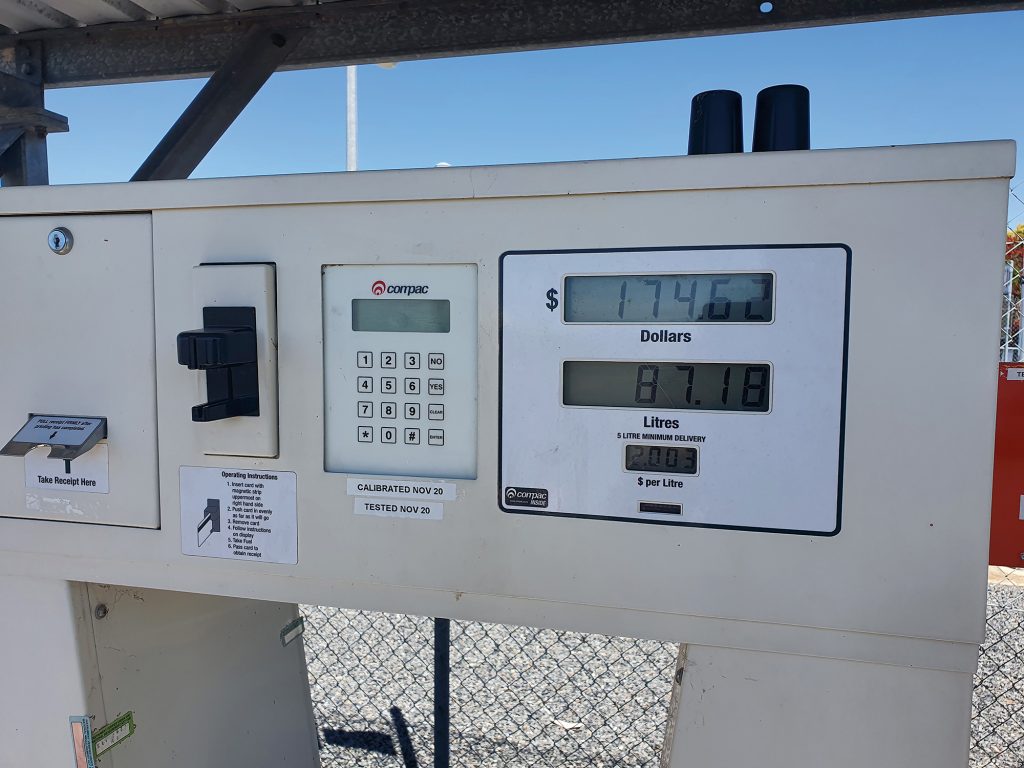
On the journey I set the autopilot at 6500ft and tracking straight for Broken Hill. I leaned out the engine and optimised for cruise. Then I got to do all those things that you struggle with as single pilot. I was ahead of the radio frequencies. I was checking the nav and realising the AP was doing a much better job of holding straight and true than I ever did. I scanned my instruments more frequently. Sometimes I just looked out the window, confident that when I looked back in the cockpit, we would be bang on course. I varied my course ever so slightly to avoid flying over the top of Mildura – it’s a busy airport. It was as simple as selecting track and gently winding the knob a half turn to the right. On arrival at Broken Hill – a fabulous airport if you happen to be out that way – I climbed out of the aircraft and realised I was feeling pretty good. Rested even. Compare that to days when I was feeling like a wrung-out sponge after two hops in the Tecnam for almost 5 hours aloft and it was a different world. And that is probably where the value in the AP setup lies for me. If you’re just doing short hops, then an autopilot will probably just deprive you of the joy of flying. Ditto for anyone just buzzing around for the sheer joy of it. But for me, it makes sense. If I can be ahead of the aircraft, on top of the navs and comms and arrive refreshed, it’s well worth it. I wouldn’t be frightened to climb back in to the aircraft and do another leg like that back to back and still be fresh enough to attend a meeting on arrival.
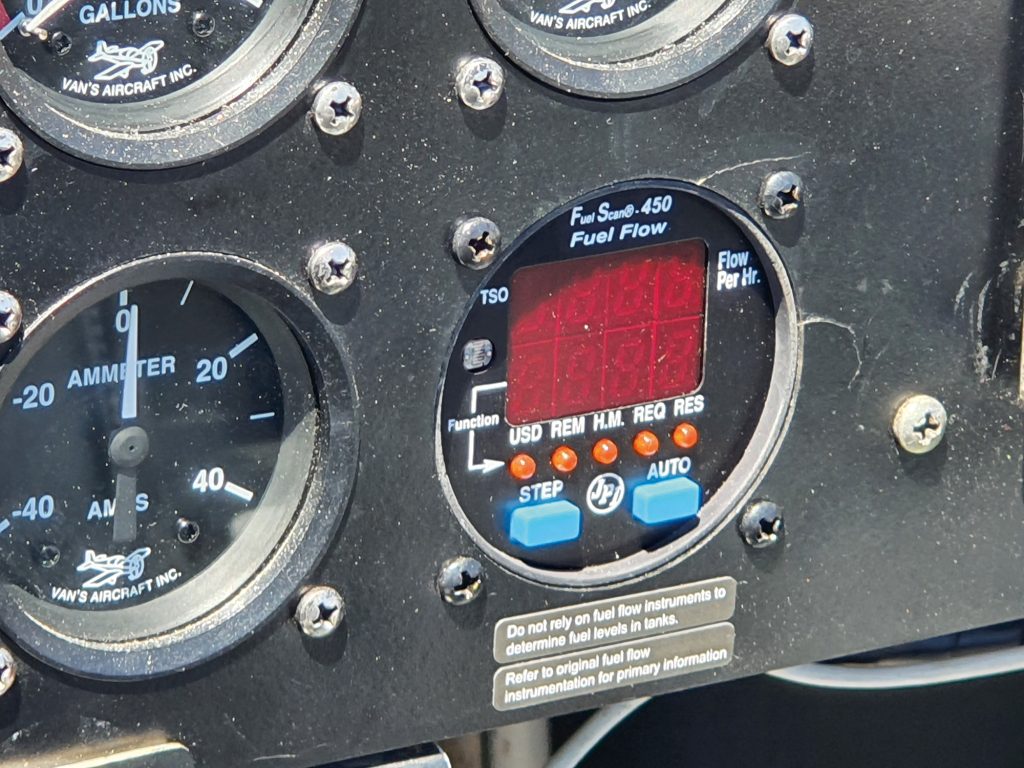
So, what next? In the long term, the panel will get a major upgrade. But the depleted state of the wallet means that’s a way off. This aircraft was very basic when we bought it. Interior trim consists of seat cushions. It would be nice to freshen those up and maybe add some creature comforts
Note: This is not a sponsored story. These upgrades were purchased and paid for out of my own pocket and the opinions are mine alone. Horsham Aviation is an advertiser in our magazine and also a distributor for Dynon Avionics in Australia.
